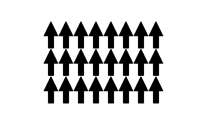
Photo from wikipedia
Simple Summary Blow fly life cycles are commonly used to estimate the time elapsed since death of unattended death when this interval is greater than 48 h. Female flies lay… Click to show full abstract
Simple Summary Blow fly life cycles are commonly used to estimate the time elapsed since death of unattended death when this interval is greater than 48 h. Female flies lay eggs in clusters, resulting in larval masses that vary in density and species, which may impact resulting adult fly size, reproductive ability, and even survival to adult. How multiple blow fly species all use the same limited dead animal resources without causing extinction of one or more species is still poorly understood. Therefore, the goal of this research was to test the role of temperature, number of individuals, and presence of other species during immature development in adult fly size and survival to adult between two common blow flies. The number of individuals and temperatures experienced by the larvae during development was manipulated in the presence of individuals of the same or different species in the laboratory. Survival to adult and body size was larger for one species (Phormia regina) when developing with the other (Lucilia sericata). In contrast, the other species’ (L. sericata) survival depended primarily on temperature. However, body size increased with the presence of the second species (P. regina), depending on temperature and number of individuals. The results of this study suggest that while temperature may be the most critical factor influencing interactions between blow fly species, the number of individuals and the ratio of individuals of each species must be considered when using these data for time of death estimates in forensic entomology. Given the critical role of temperature in influencing these outcomes, climate change has the potential to disrupt the ability of these species to coexist in their current distributions. Abstract Blow fly (Diptera: Calliphoridae) interactions vary between competition and facilitation. Female blow flies engage in aggregated egg-laying, resulting in larval feeding masses differing in density and species composition. Numerous species are abundant within the same season, and some oviposit near or directly on eggs of other species, modifying their oviposition location choice depending on the presence or absence of other species. The ability to coexist on carrion, a temporary resource, was successfully attributed to resource, spatial, and temporal heterogeneity. Despite these broad categorizations, the specific mechanisms of coexistence within blow fly communities require further investigation. This study investigates variation in temperature and larval density as potential mechanisms of coexistence between two forensically important blow fly species: Lucilia sericata Meigen and Phormia regina Meigen (Diptera: Calliphoridae). Larval density, species ratio mix, and ambient temperature during development were manipulated in the presence of conspecifics and heterospecifics in the laboratory, and the fitness of each species was measured. In heterospecific treatments, the survival and body size of P. regina increased even at high ambient temperatures. In contrast, the survival of L. sericata remained unaffected by density or presence of heterospecifics, whereas body size increased in L. sericata-dominated heterospecific treatments depending on temperature and density. The negative effects of density were observed at high ambient temperatures, suggesting that density impacts are a function of ambient temperature. Overall, species coexistence was dependent on temperature, which mediated the outcome of species interactions.
Journal Title: Insects
Year Published: 2023
Link to full text (if available)
Share on Social Media: Sign Up to like & get
recommendations!